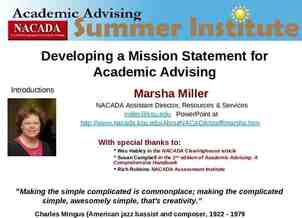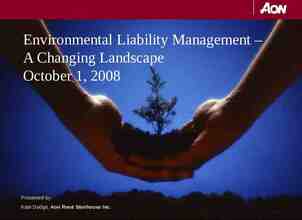Intelligibility as a Measure of Dysarthria Survey of SLPs Working with
15 Slides490.93 KB
Intelligibility as a Measure of Dysarthria Survey of SLPs Working with Adult Populations Madeline Esch Dr. Patricia Swasey Washington & Dr. Elizabeth Grillo 2nd Annual Virtual Research & Creative Activity Day West Chester University April 29. 2021
Dysarthria Speech disorder impacting strength, speed, tone, and/or accuracy of speech processes (Rampello et al., 2016) Neurological disruption (Dykstra et al., 2007; Gurevich & Scamihorn, 2016) Amyotrophic Lateral Sclerosis (ALS) Traumatic brain injury Parkinson’s disease
Intelligibility “the degree to which the listener (familiar/unfamiliar) understands the individual’s speech; typically reported as a percentage of words correctly identified by the listener” (ASHA, n.d.) Why intelligibility? Quantifies the impact of dysarthria on an individual’s speech (Hustad & Cahill, 2003; Frearson, 1985)
Components of Intelligibility Measurement Speech Tasks Single-word, sentence, conversational levels Listener Familiarity Increased familiarity tends to result in increased intelligibility scores (Hustad & Cahill, 2003) Recording Method Audiovisual vs. audio-only
Accents/Bilingualism Intelligibility Dialect mismatch influences intelligibility perception regardless of dysarthria (Dagenais & Stallworth, 2014) Clinicians in the United States primarily speak Standard American English dialect, adding risk for communication breakdowns when working with speakers of other languages/dialects (Dagenais & Stallworth, 2014)
Limitations to Current Assessments Few SLPs use current standardized intelligibility assessments (Gurevich & Scamihorn, 2017) Majority of formal assessments were created 25 years ago Assessments designed for one population may not be culturally/linguistically appropriate for all clients One intelligibility rating does not represent all interactions
Survey Survey of ASHA-certified SLPs working with adults Incidence of dysarthria Dysarthria assessment procedures (intelligibility) Clinician/client languages Availability of technology 63 responses
Survey Results: Dysarthria Only 4 out of 63 respondents reported never treating a client with dysarthria 63% of participants reported gaining a new client with dysarthria at least once every three months 37% at least once a month 68% have worked with clients with dysarthria who have spoken a language other than English
Survey Results: Dysarthria Assessment Of those who have worked with clients with dysarthria (59 respondents): 89% reported tracking changes in intelligibility over the course of treatment “always” or “very often” Less than 7% reported complete satisfaction with current formal intelligibility assessments 11% reported using technology-based tools to assess intelligibility
Survey Results: Dysarthria Assessment Cont. Frenchay Dysarthria Assessment (27) Assessment of Intelligibility of Dysarthric Speech (18) Tikofsky’s 50-Word Intelligibility Test (2) Dysarthria Examination Battery Newcastle Dysarthria Assessment Radbound Dysarthria Assessment Robertson Dysarthria Profile Arizona Articulation Proficiency Scale Fisher Logemann Test of Articulation
Survey Results: Languages Clinicians: 96% of respondents reported English as their primary language 22% spoke one or more additional languages Over 90% reported working with clients who speak other primary languages Clients: Spanish is most common primary language other than English
Survey Results: Languages Cont. Strategies to overcome language mismatch: Translator/interpreter (67%) Family members who speak both languages (65%) Translating/interpreting device (44%)
Survey Results: Technology 56% of participants report being provided with an iPad/tablet through their workplace An additional 11% report using their personal technology 77% reported “sometimes,” “very often,” or “always” using electronic devices while interacting with clients 16% indicated a preference for digital over printed tools/materials 41% indicated equal preference for digital/print
Survey Conclusions Potential for development of intelligibility assessment tool Easy, quick administration Accessible Technologically-based
References American Speech-Language-Hearing Association. (n.d.) Dysarthria in adults. Retrieved from https://www.asha.org /PRPSpecificTopic.aspx?folderid 8589943481§ion Assessment Dagenais, P. A. & Stallworth, J. A. (2014). The influence of dialect upon the perception of dysarthric speech. Clinical Linguistics & Phonetics, 28(7-8), 573-589. Dykstra, A. D., Hakel, M. E., & Adams, S. G. (2007). Application of the ICF in reduced speech intelligibility in dysarthria. Seminars in Speech and Language, 28(4), 301-311. Gurevich, N. & Scamihorn, S. L. (2017). Speech-language pathologists’ use of intelligibility measures in adults with dysarthria. American Journal of Speech-Language Pathology, 26, 873-892 Hustad, K. C. & Cahill M. A. (2003). Effects of presentation mode and repeated familiarization on intelligibility of dysarthric speech. American Journal of Speech-Language Pathology, 12, 198-208. Rampello, L., Rampello, L., Patti, F., & Zappia, M. (2016). When the word doesn’t come out: A synthetic overview of dysarthria. Journal of the Neurological Sciences, 369, 354-360.




















